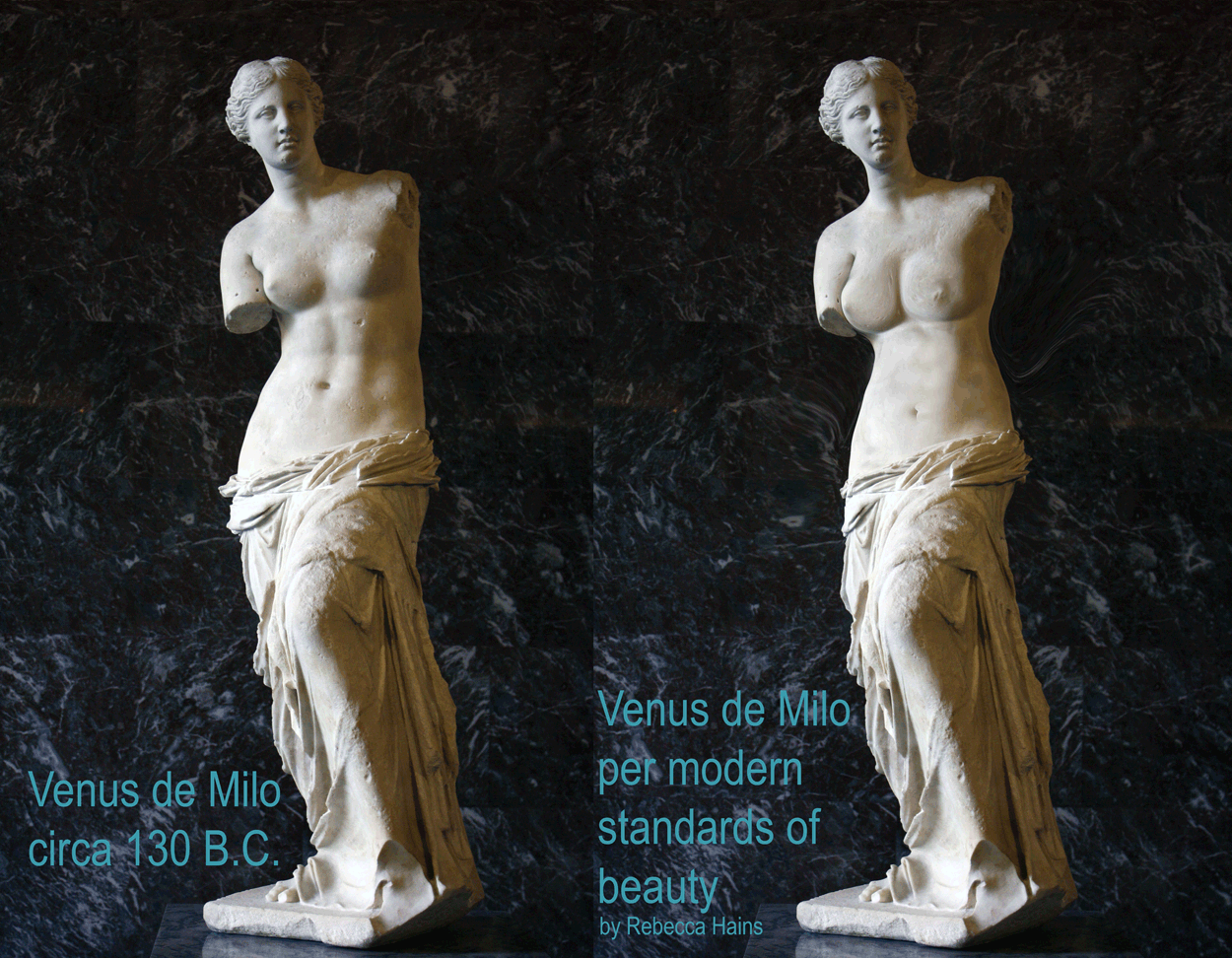Originally published at rebeccahains.wordpress.com; cross-posted with permission.
Several years ago, I was admiring the Venus de Milo at the Louvre when a group of American teens approached. Eyeing the statue, one girl blurted out: “She’s so fat.”Her friends laughed and agreed, but her comment just made me sad. The girls were surveilling the Venus de Milo in the same way that our culture has trained girls to surveil themselves and one another: to always be attuned to whether females are living up to our culture’s beauty ideal—and to judge and condemn those who do not.
Besides, the Venus de Milo is most certainly not “fat.” She just differs from the body type that has become the hard-and-fast ideal over the past century. But because these teens were so accustomed to the Photoshopped norm, they couldn’t see the beauty in this classic work of art. This series of retouched masterpieces reminded me of that experience. No doubt some viewers will find the new versions an improvement. As for me, I favor the originals—simply because I appreciate that classic art proves that our culture’s take on “beauty” has been drastically redefined and unreasonably narrowed in recent decades.
So, today, I decided to retouch the Venus de Milo myself using Photoshop. Here she is, in her original form and again by today’s beauty standards–in a form that modern teens might find beautiful, rather than laughable:
As an aside, I found the process of retouching this image disconcerting. Every time I stood back to inspect my handiwork, I thought, “she’s STILL not thin enough to meet the standard.” I actually thought I was done three times and went back in to do more. It was hard to decide when to stop.
If you compare this image to the retouched models found in magazine advertisements, you’ll probably agree that I could have gone even further. She could have been smaller still. And that’s surely a significant part of the reason why so many of the Photoshop jobs we see on models are completely overdone, with waists smaller than their heads: Once you start retouching, it’s hard to pick an end point. There’s always something else you could do. The software makes it so easy.
Women can be beautiful at any size. It’s unfortunate that in today’s media culture, one body type is presented as the only kind of body that is valued. Women who don’t fit the mold are ridiculed, and many of us spend endless amounts of time, energy and money pursuing the ideal. It’s tantamount to brainwashing.
Readers: What do you think?
P.S. I’d like to focus our conversation on what this kind of project can tell us about the beauty norms that seem so natural and unavoidable to us today, rather than a conversation about which body type is “better,” “prettier,” “more attractive,” etc. Let’s not judge women’s bodies—let’s judge our cultural norms and the social acceptability of objectifying women. Thank you!
——-
Rebecca Hains is a media studies professor at Salem State University. Follow her on Facebook and Twitter.
